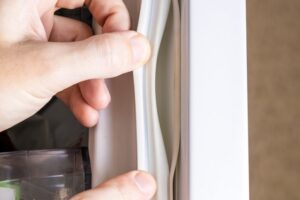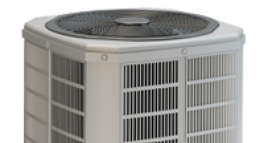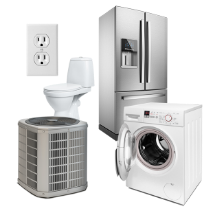Setting your refrigerator temperature right has several benefits. It keeps food fresh and can help you optimize how your use your fridge. 2-10 Home Buyers Warranty (2-10) can tell you the ideal refrigerator temperature, offer three tips for maintaining that temperature, and show you how a 2-10 Home Service Plan can help you.
The Ideal Refrigerator Temperature
40°F is the ideal refrigerator temperature. Try to keep your temperature range between 34°F and 40°F.
The FDA strongly recommends keeping your refrigerator’s temperature at no higher than 40°F. If it’s higher than that, you risk getting sick from your food, thanks to the growth of bacteria that thrive above 40°F (e. coli, salmonella, listeria).
However, you should set your freezer temperature at 0°F or lower.
Refrigerator Temperature Tips
The easiest way to maintain a 40°F or lower refrigerator temperature is calibrate your refrigerator’s temperature settings. Whether it’s a push button, dial, or otherwise, you can adjust your refrigerator’s temperature as needed. Then, place a thermometer on the middle shelf and check it after a few hours to make sure your refrigerator temperature control is working properly.
Once you’ve done that, use the following three tips to keep your refrigerator running well.
1. Keep those doors shut as much as possible
It’s easy to get lost in the refrigerator. Whether you’re just browsing through leftovers or can’t find what you’re looking for, keeping the doors open for longer than necessary can cost you in the long run.
Some smart refrigerators let you tap a screen to see what’s inside, which can be helpful. But if you don’t have a smart refrigerator, there are a couple things you can do to minimize door opening.
- Store items consistently so you know where they are before you open the door.
- Resist the urge to “just look” in the fridge.
2. Avoid overloading your refrigerator
Generally, your refrigerator will use the same amount of energy whether it’s full or empty. However, overloading your fridge can make it harder to regulate fridge temperatures.
An overloaded fridge makes it harder for air to circulate properly. Improper circulation means your refrigerator has to work harder to maintain the temperature you set. The harder it works, the more likely it is to break down, which can be costly.
A good way to avoid overloading is by locating the internal vents. You don’t want food to block those vents. Blocked vents can cause spoilage. Additionally, if you have to bend, squish, or otherwise alter your foodstuffs to get them to fit, you might be overloading your fridge.

3. Check your gaskets (seals)
Refrigerator gaskets (seals) are a common culprit of cold air escape. As they age, they tend to dry out, warp, and crack. This allows cool air to escape and warm air to rush in, which can cause spoilage.
It’s good practice to check your fridge door gasket at least once a year. If you notice air seeping out at the door, cracks in the gasket, or food that spoils more quickly than expected, replace the gasket.
Thankfully, with the right tools and a little time, replacing a refrigerator door gasket is a good do-it-yourself project.
Add a 2-10 Home Service Plan to Your Arsenal

Refrigerator breakdowns are becoming more common because of increased use nationwide. This increased use often means more breakdowns, which can be expensive to address.
A 2-10 Home Service Plan can help you reduce the costs to address refrigerator breakdowns. Even better, 2-10 Home Service Plan coverage goes beyond refrigerators. Your coverage can include other major kitchen appliances, heating and cooling systems, and more.









